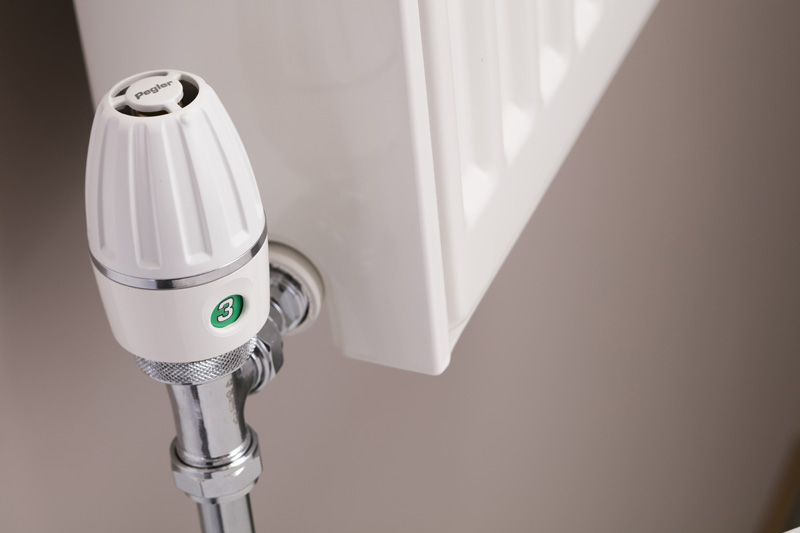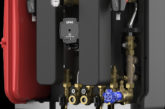
Recently, the EU passed legislation that will drive the installation of TRVs in new and retrofit projects and it is expected that the UK will pass this as mandatory in the coming months. Sindar Singh, Valves Market Manager from Pegler Yorkshire, explains what this means to installers.
BEAMA has been fundamental in making this change happen through political advocacy and driving awareness to ensure installers and their customers reaped the benefits of this alternative legislation. It has worked with the regulatory bodies to ascertain how such a change could be implemented and supported activity from European industry partners.
As a member of BEAMA, Pegler Yorkshire supports this approach and the reasoning behind the drive to change the guidance and legislation. It is important that installers get ahead of the game and understand the science behind this simple technology and how TRVs impact energy bills and carbon footprints. By adopting the changes to the rules now, installers will be able to offer an enhanced service to their customers and be well placed to continue this once the regulations are mandatory.
The background
Many of you will have been aware of the discussions surrounding the ‘Boiler Plus’ replacement boiler scheme. It was perhaps at that time that the scheme could have made installation of TRVs mandatory when replacing boilers. Now, though, there is a new guideline which will supersede this giving clearer and detailed direction.
In the EU Energy Performance of Buildings Directive, voted through in April of this year, the following was outlined. It said that all EU member states “… shall require new buildings, where technically and economically feasible, to be equipped with self-regulating devices for the separate regulation of the temperature in each room or, where justified, in a designated heated zone of the building unit. In existing buildings, the installation of such self-regulating devices shall be required when heat generators are replaced, where technically and economically feasible.”
It is not surprising therefore that a change in guidance, and eventually legislation, will occur and it is this that we are striving to educate and make everyone aware of.
With 40% of all energy consumption in the EU attributed to buildings, there has never been a better time to embrace the proposed changes to the minimum legal requirement which will help homeowners and customers to manage their domestic energy consumption more effectively and reduce their carbon footprint. We ask, what are you waiting for?
The changes
Currently, the installation of TRVs is merely a requirement for new systems under the building regulations, yet we know that many of you have continued to help your customers by installing TRVs to older systems as a retrofit upgrade. It is these inconsistences though – purely down to installer and customer liaison – that will be eradicated from the new legislation.
The Energy Performance of Buildings Directive (EPBD) which has formulated this change in practice, with its eye firmly on climate change, will direct member countries to implement the change in policy to suit local guidelines and legislation, thereby recognising individuality and refraining from an impractical, blanket approach.
Here in the UK, it is hoped that Part L of the Building Regulations will be amended to incorporate the EPBD directive so that, in effect, the installation of TRVs becomes mandatory when replacing a heat generator.
The timescales
The changes were formally adopted on the 14th May and now need to be implemented. However, there is a period of 20 months, in which all EU member states will have to have integrated the directive into their own independent guidelines and regulations. This means the UK will see the most significant impact from early 2020. Brexit may, of course, play a part in this yet. However, any legislation agreed before leaving the EU would still apply thereafter.
The future
At Pegler Yorkshire, we wholly support this change to legislation and it is our recommendation that installers adopt this as best practice before 2020; raising reputations as knowledgeable, driven installers who ensure the very best systems are fitted for their customers. This will allow these customers to reap the benefits of energy saving, the costs attributed to this and, to take an important step in being more responsible homeowners, highly appropriate when there is such emphasis on sustainable and responsible lifestyles.
If that wasn’t enough a recent report by the European Association for Building Automation and Controls, stated that the additional installation of TRVs will ‘pay for themselves six times over, as well as providing better internal comfort.’
The choice
One way to ensure you are fitting the most efficient and technically advanced TRVs is by using only those that attain the correct approvals such as EN215. For valves with compression connections, those connections should be approved to BS EN 1254-2 and threaded connection should comply with BS21 or BS2779. All Pegler Yorkshire valves give complete quality assurance and are manufactured in accordance with ISO 9000:2001.













